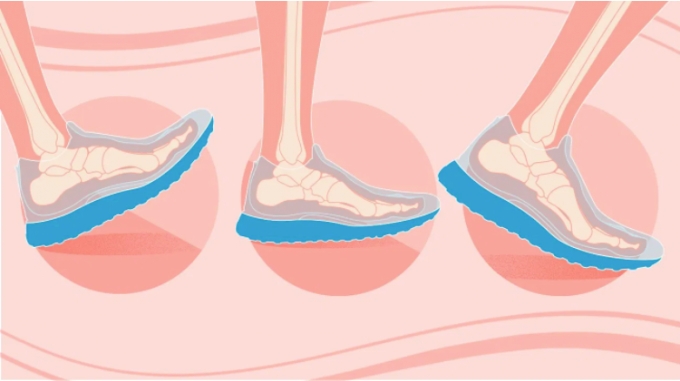Pronation vs. Supination: What Is The Difference?
Pronation vs. Supination: What Is The Difference?
Classifying between pronation and supination

While running might seem like something you can just get up and do, it’s extremely important that your form and technique while exercising is correct to limit any harm on your body.
Whether you are breaking in new running shoes or you have been running your whole life, it’s important to make sure you are exercising correctly while participating in this sport.
Compared to other exercises, it might seem like running wouldn’t be as physically taxing or harmful to your body, but the repeated contact between your feet and the ground can affect a whole lot more than you might think. One issue you might encounter is pronation.
Pronation is essentially all the little movements in your foot while you run. You might not even realize it, but each step you take can make your foot rotate inward or outward. Pronation can vary depending on each person’s foot tilt or rotations. There are three types: overpronation, neutral, and supination.
Classifications
Overpronation is when the foot has a greater than 15 percent rotation tilted inward. Those with a small foot arch or flat feet are more prone to overpronation.
Neutral occurs when you have slight inward rotation, approximately 15 percent. The foot rotates very little and maintains a straight aligned position.
Supination is when your foot rolls on the outward side, putting more pressure on the outer toes. If you have plantar fasciitis, sprained ankle, or shin splints, you might be more likely to have this type of rotation.

Solutions
Pronation can be adjusted and fixed fairly easily. There’s no serious meeting with your doctor or any surgery needed, the solution for pronation essentially boils down to the shoes you wear. If you are experiencing overpronation or supination, go to a running or athletic shoe store and get fitted for a better type of shoe. It’s as easy as that!

Typically those with overpronation issues need a shoe with more support in the heel and sole of your foot. This is because your foot tilts inward, so having more support in those areas can bring you closer to neutral.
Supination can be solved with shoes that provide a lot of cushion. This helps with the issue of repeatedly putting weight on the outside of your foot while running.
Those with neutral need a shoe that will continuously keep you aligned and supported with each step. Because there isn’t one side of the foot being favored or tilted toward, you can pick any shoe that feels great to you!
If you are still experiencing issues running or your pain increases, it’s important to talk with your doctor and consider other types of treatment such as physical therapy.
The importance of having a shoe that supports and adds to your running experience instead of worsening it is crucial. Whether you suffer from overpronation, supination, or even if you’re neutral, knowing the difference between these classifications can help if you ever run (no pun intended) into any issues down the road.